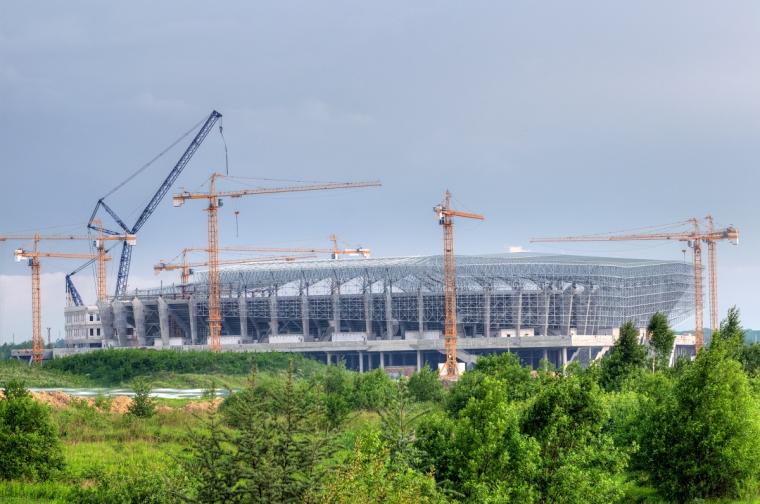
The supply chain issues plaguing commerce in the U.S. are hitting hard in a sector all readers are familiar with – sports venues. In short, the construction, improvement and management of facilities has been hampered by a lack of materials, equipment and supplies.
Alabama’s Greenville High School was hoping to begin construction on its new football stadium; however, according to Athletic Business, the project has been delayed because contractors are having difficulty sourcing materials.
“We’re already being told there’s holdup with metal,” said Butler County Schools Superintendent Joseph Eiland. “There’s a holdup with so many other products, and that’s just, you know, what every school system is facing.”
According to the local NBC affiliate, Eiland hopes the stadium will be done by fall of 2023, but that is, of course, just a hope.
Another high school, Muncie Central in Indiana, would like its new football stadium ready for play next season – but again, that is a wish-list item. An article in the Star Press notes that the CFO of the school district has concerns that supply chains and material shortages that have plagued construction projects in general will visit this project.
The issue is hitting as high on the food chain as pro arenas. In Hartford, Connecticut, The Journal Record notes that a state-financed, $4 million project to improve the XL Arena (approved after lawmakers passed legislation legalizing sports gambling last year) is also being held up. Officials told the Hartford Courant that delays in receiving crucial construction components are to blame, and that the project isn’t expected to be completed until at least March.
It had been hoped the improvements, which include the addition of a 4,000-square-foot sportsbook, featuring a bar and restaurant, would be open in time for the start of the NFL season. In this case, a main component delaying the project is a large glass wall that will overlook a major intersection and is expected to transform the building’s bunker-like appearance.
“We’re groping along, frankly, because the window system is frustrating us,” Michael W. Freimuth, executive director of the Capital Region Development Authority, which oversees arena operations, told the newspaper. “We’re trying to keep going, but the wall system is going to delay us.”
In some cases, projects are reconnoitering and reconsidering their options. All the way back in May, for example, Spokane’s NBC affiliate noted that inflation and supply chain issues were forcing Spokane Public Schools and its partners to scale back or delay some aspects of the new downtown stadium.
 “I think inflation has caused us to look at a lot of different possibilities,” said Greg Forsyth, director of capital projects for the school district. The project’s partners have noted that they will attempt to stay under budget by using some less-expensive exterior construction blocks and other substitute materials earmarked for non-critical parts of the stadium, issues which they say will not be visible to users.
“I think inflation has caused us to look at a lot of different possibilities,” said Greg Forsyth, director of capital projects for the school district. The project’s partners have noted that they will attempt to stay under budget by using some less-expensive exterior construction blocks and other substitute materials earmarked for non-critical parts of the stadium, issues which they say will not be visible to users.
Additionally, the article points out, workers are attempting to head off some problems at the pass by buying materials while they are available, even if that means sooner than they will be needed and stockpiling them for later use. However, it appears that most of the savings will have to come from delaying parts of the $35 million project. According to Forsyth, those could include putting off construction of two of the four planned locker rooms as well as electric power upgrades to accommodate outdoor concerts.
It's not just venues. Across the youth sports industry, for example, there is a widespread shortage of football helmets, as well as equipment including cleats, uniforms, technological accessories and more. SDM will continue to follow this developing issue.

